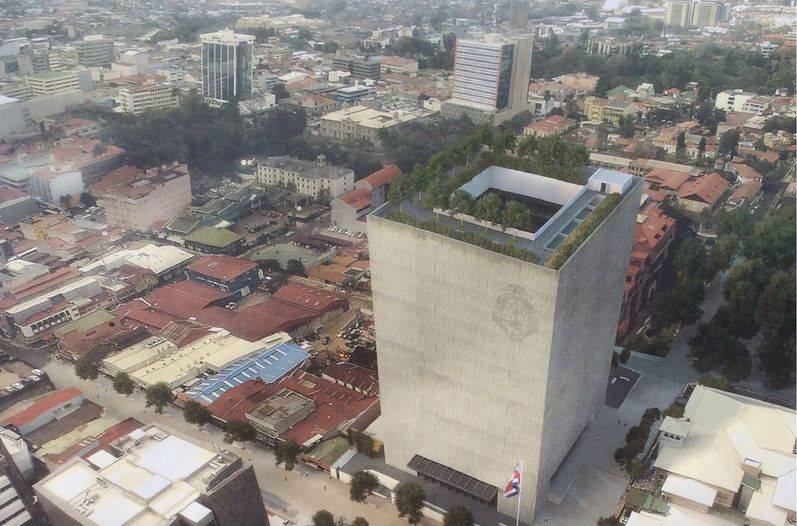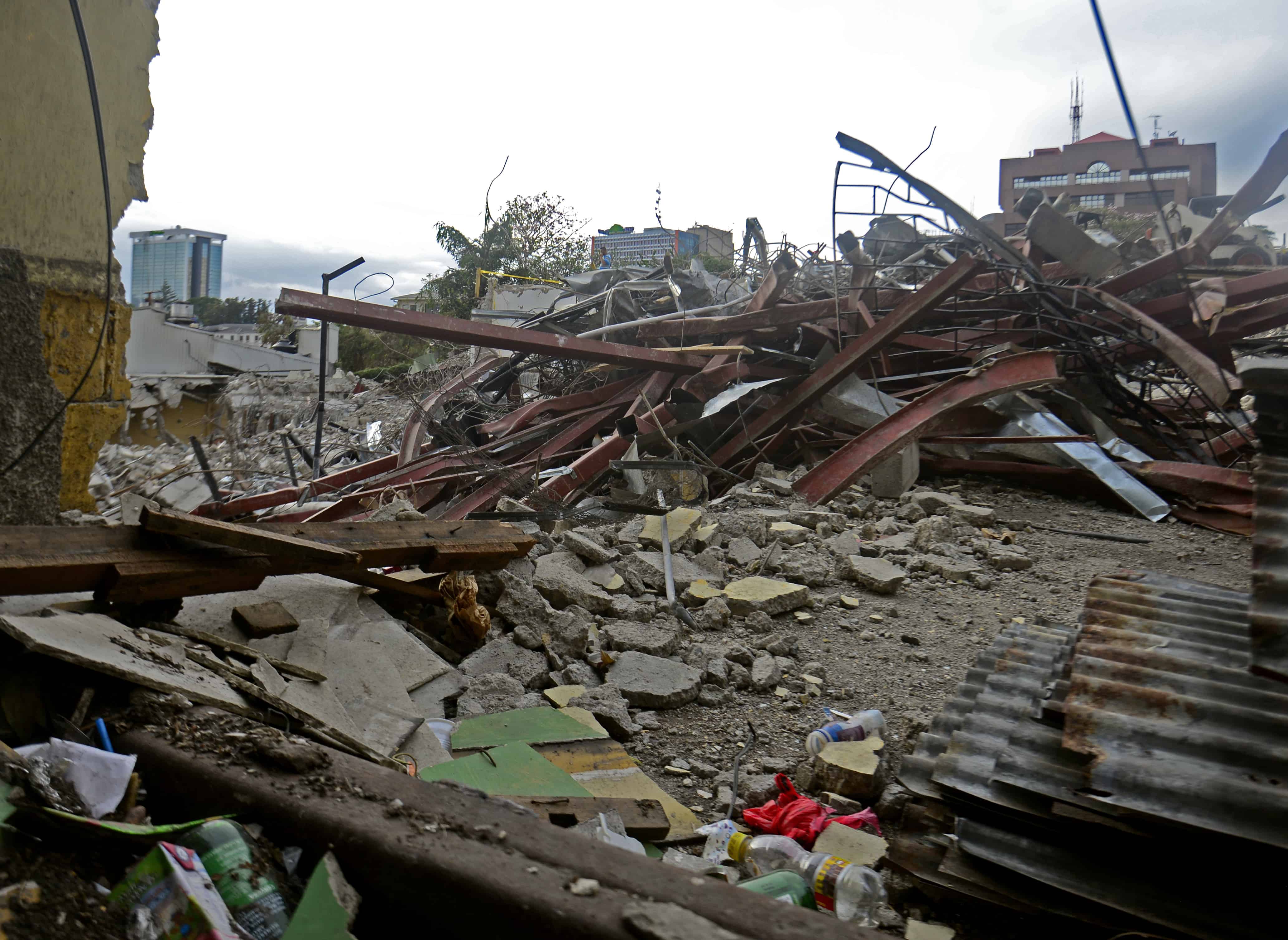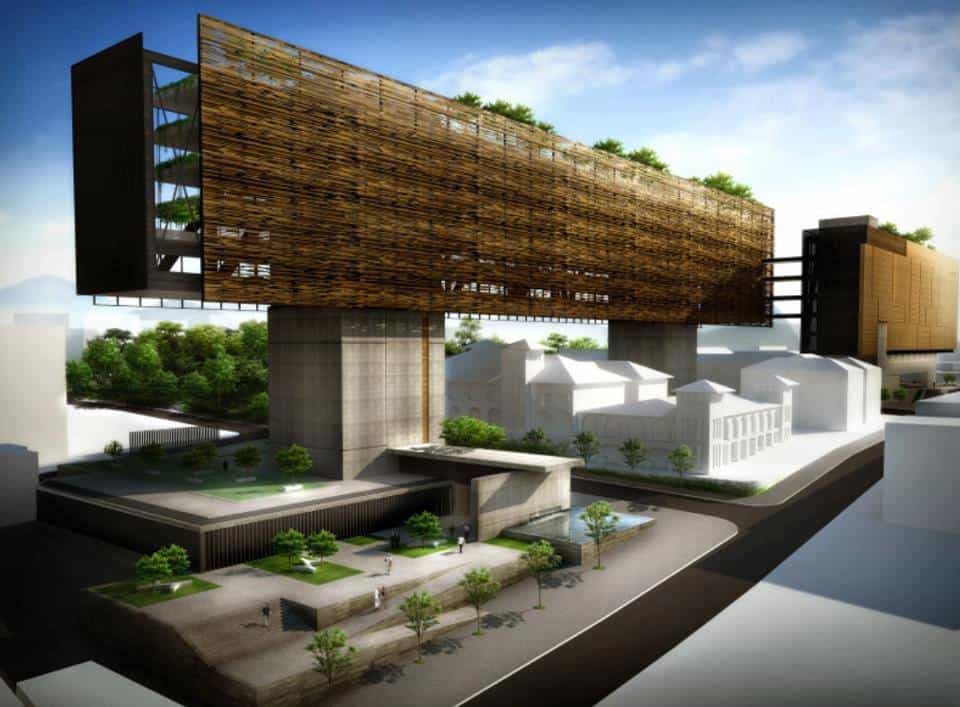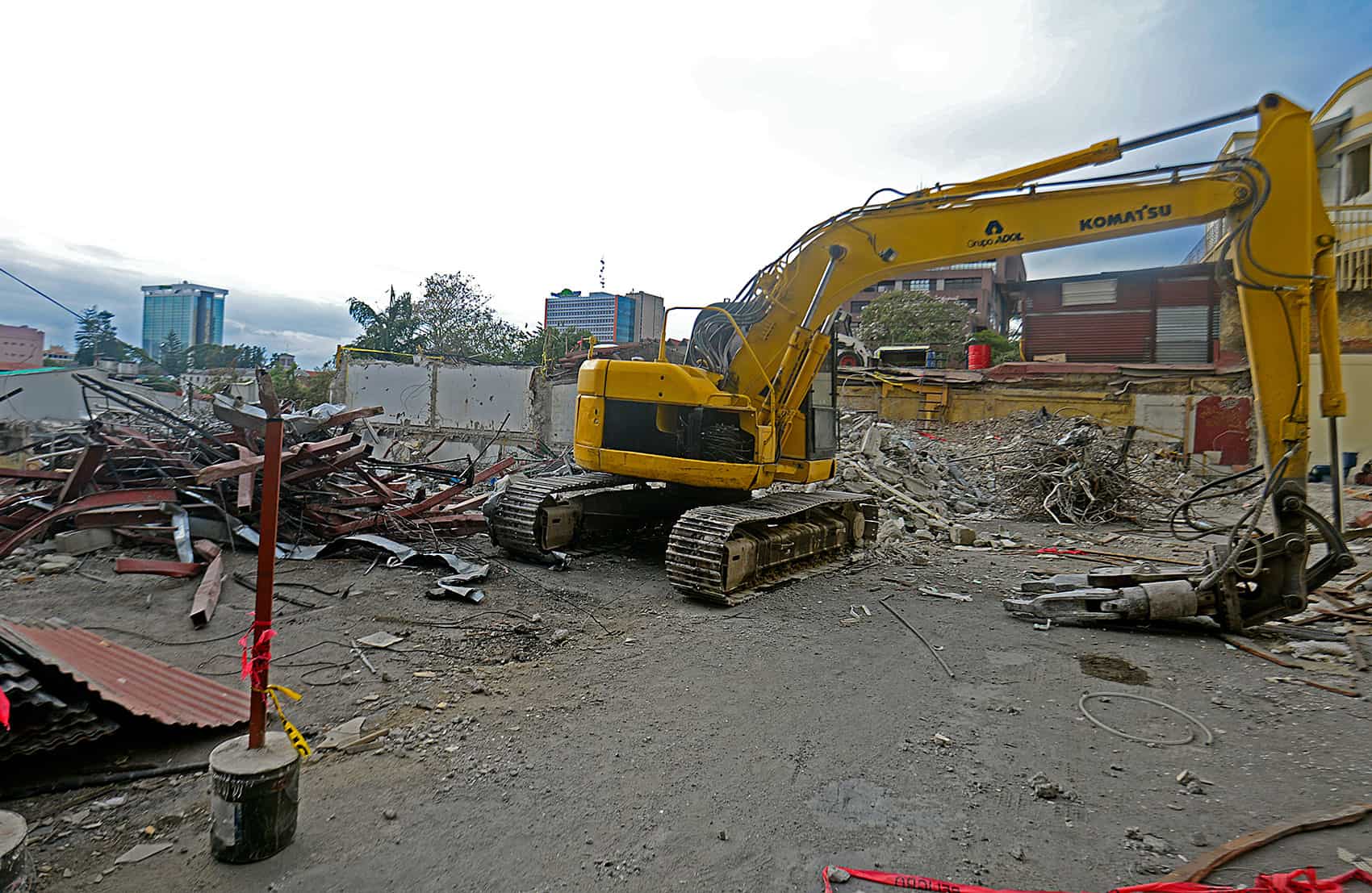Demolitions are paving the way for construction of the new Legislative Assembly building in downtown San José, and there now seems to be no turning back from a project that has generated waves of criticism from area architects and residents.
Legislative Assembly President Rafael Ortíz told The Tico Times Monday that all the bureaucratic and legal obstacles required to proceed with the building’s construction will be finalized within the next week. Recent approvals from the Culture Ministry, which ultimately halted architect Javier Salinas’ first proposal in 2014, and the Secretary General of the National Technical Secretariat of the Environment Ministry (SETENA) have cleared the way for construction, which is supposed to begin in September.
“Now that all the legal permissions are secured and the bank loans are set, it’s impossible to stop this,” Ortíz said. He added that Salinas’ firm is awaiting one final green light from the Federated Association of Engineers and Architects (CFIA) before the project is officially a go.
“Well, this is Costa Rica so I guess anything could happen,” he clarified. “But we have every indication to say we’ll be moving forward with this project very soon.”
The new Legislative Assembly, which will be located at the intersection of Calle 15 and Central Avenue between the current assembly building and the National Museum, has faced constant backlash since Salinas was awarded the project in a competition in January 2013. The initial plan of two, overlapping horizontal structures was shot down by the Culture Ministry’s Heritage Conservation Center because it would have threatened historical buildings in the area.
The modifications made in a 2015 redesign called for a 17-story vertical tower made of concrete walls.

William Monge, director of the Heritage Conservation Center, told The Tico Times in a sit-down interview last week that his department was unable to interfere with the project this time around because legally the second design doesn’t affect the neighboring buildings designated as heritage sites.
“The second proposal is being built on land that is not a heritage site, so our involvement was only to observe that the new building will not effect the heritage site in front [of the proposed building],” Monge said, in reference to the National Museum.
But opponents of the building have said the 17-story mass of concrete will block off views of adjacent buildings, as well as of the mountains that ring the Central Valley. They have also echoed functionality and price concerns voiced by local architects, including the lack of windows and apparent lack of air circulation, which they say could result in high electricity bills.
Monge, a former architect, said he’s well aware of the criticism that has bombarded the project since its onset. But he said the Heritage Center cannot legally challenge it based on aesthetic value or blocked views.
“In the cosmetic aspect, we don’t have the legal capacity to intervene,” he said. “It doesn’t matter if we like it or not, or if it’s very tall. We, as the government, as the ones in charge of heritage conservation, can only go as far as the law allows.”
Salinas defends his design
During an April 14 meeting at San José’s Veritas University, architects and former professors of Salinas, the new building’s designer, expressed strong doubts about the project. Bruno Stagno, a Costa Rican architect who said he once failed Salinas in a class, told his one-time pupil that the wall of concrete and lack of ventilation will lead to overheating inside the building, while also not allowing in enough natural sunlight.

Salinas responded with a public statement last week, saying those concerns have been addressed since the beginning through scientific testing from international experts and the project’s supervising company Novatecnia.
“The reality is that the construction plans have already been submitted and show technical details that reveal the manner in which the project will be acceptable in a bioclimatic way,” Salinas wrote in the release. “That’s why I have taken a base evaluation from an international expert in bioclimatic design, whose analysis was used to complete the plans, as well as organizations like the American Society of Heating, Refrigerating and Air-Conditioning Engineers which recognize the thermic control benefits of using concrete walls.”
However, no statistics have been made public and Salinas said last week that he is still waiting to release all the details of the project.
Critics of the new design, like city councilwoman Marité Valenzuela, have said both Salinas and the Legislative Assembly have been overly secretive with the project’s progress ever since the second proposal began to go through the legal requirements. She said this perceived withholding of information was “unconstitutional.”

But Legislative Assembly President Ortíz said any criticisms of working under the table with this project are unfounded.
“I sincerely don’t see how that’s possible considering we had news conferences and formal announcements, on top of telling people where the building was going to be and trying to get people interested in it,” he said.
Ortíz said getting a new building for the Legislative Assembly is critical because the Health Ministry has declared some of the current buildings uninhabitable. Meanwhile, the government spends $3 million annually on rent and upkeep for the buildings, he said.
Plus, the legislature’s current setup, which has members and support staff spread out in various buildings across the eastern edge of downtown San José, constantly hinders lawmakers’ abilities to do their jobs, Ortíz said.
Before Salinas’ original design was nixed by the Heritage Center, Ortíz said legislators were almost unanimously in support of it.
“It reflects what Costa Rica is a lot of times, when everyone in the government seems to be on board with something, but one hangup, like in this case with the Heritage Center, can put a stop to the whole process,” he said of the first proposal.
That initial design remains on the portfolio section of Salinas’ web site with an interesting, almost foreboding tagline given the redesign. It says in Spanish: “Verticality isn’t democracy.”
A subsequent graphic then promises: “A building for the people, not for the government.”

